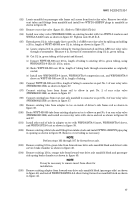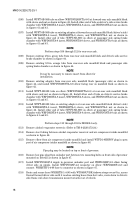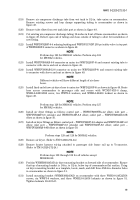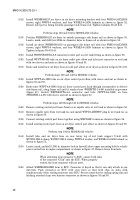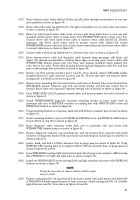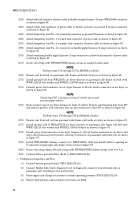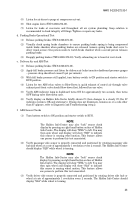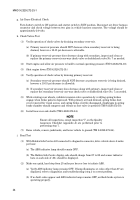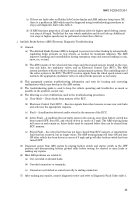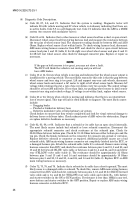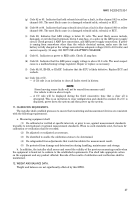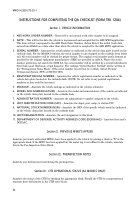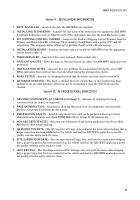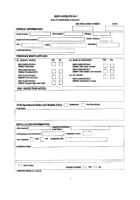MWO-9-2320-272-35-1 - Page 29 of 109
MWO 9-2320-272-35-1
27
(g)
Code 82 or 83. Indicates that hold solenoid circuit has a fault, in blue channel (82) or yellow
channel (83). The most likely cause is a damaged solenoid cable, solenoid, or ECU.
(h)
Code 88 or 89. Indicates that lamp solenoid circuit has a fault in blue channel (88) or yellow
channel (89). The most likely cause is a damaged solenoid cable, solenoid, or ECU.
(i)
Code 90. Indicates that ABS voltage is below 21 volts. The most likely causes include,
damaged, or corroded lead terminals, blown 3 amp fuse, or a splice in the ABS power supply
circuit. Check ground, 3 AMP fuse connections, and ABS power supply connections. If power
is coming from somewhere other than the vehicle electrical system, make sure the test
battery is fully charged or the voltage converter has adequate voltage (21.0 to 33.0 volts) and
current capacity (11 amp). DO NOT USE A BATTERY CHARGER.
(j)
Code 91. Indicates no power to RED cable. Check 15 amp fuse.
(k)
Code 92. Indicates that the ABS power supply voltage is above 33.1 volts. The most suspect
cause is a malfunctioning voltage regulator. Repair or replace as necessary.
(l)
Code 80, 93, E0-E9, or EA-EF. Indicates that the ECU is likely defective. Replace ECU and
recheck.
(m) Code CA or CC.
— A CA code is an invitation to clear all faults stored in history.
NOTE
NOTE
Stored moving sensor faults will not be erased from memory until
the vehicle is driven above 6 mph.
— A CC code will be displayed during the third consecutive time that a clear all is
attempted. This is an invitation to clear configuration and should be avoided. If a CC is
displayed, power down the system and then power up the system.
11. CALIBRATION REQUIREMENTS.
The installer shall establish processes to ensure that monitoring and measurement devices are consistent
with the following requirements.
a. Measuring equipment shall:
(1)
Be calibrated or verified at specific intervals, or prior to use, against measurement standards
traceable to international or national measurement standards. When no such standards exist, the basis for
calibration or verification shall be recorded.
(2)
Be adjusted or readjusted as necessary.
(3)
Be identified to enable the calibration status to be determined.
(4)
Be safeguarded from adjustments that would invalidate the measurement result.
(5)
Be protected from damage and deterioration during handling, maintenance and storage.
b. In addition, the installer shall assess and record the validity of the previous measuring results when
the equipment is found not to conform to the established requirements. You shall take appropriate action
on the equipment and any product affected. Records of the results of calibration and verification shall be
maintained.
12. WEIGHT AND BALANCE DATA.
Weight and balance are not significantly affected by this MWO.
Back to Top

